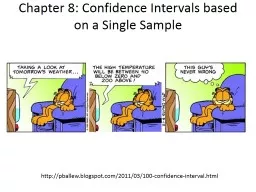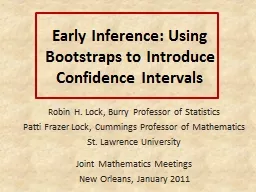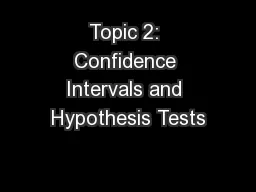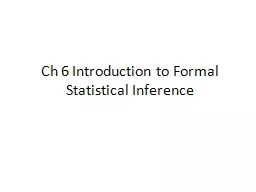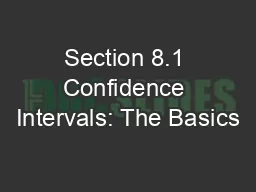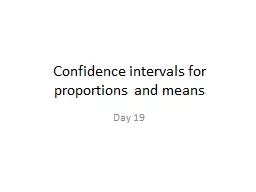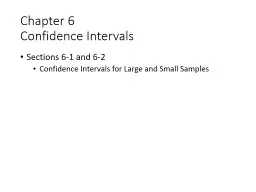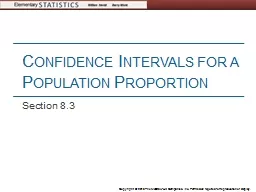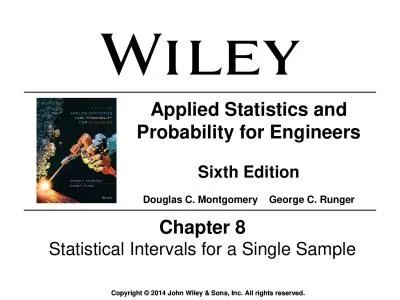PPT-Chapter 8: Confidence Intervals based on a Single Sample
Author : alida-meadow | Published Date : 2018-02-05
httppballewblogspotcom201103100confidenceintervalhtml Statistical Inference 2 Sampling Sampling Variability What would happen if we took many samples 3 Population
Presentation Embed Code
Download Presentation
Download Presentation The PPT/PDF document "Chapter 8: Confidence Intervals based on..." is the property of its rightful owner. Permission is granted to download and print the materials on this website for personal, non-commercial use only, and to display it on your personal computer provided you do not modify the materials and that you retain all copyright notices contained in the materials. By downloading content from our website, you accept the terms of this agreement.
Chapter 8: Confidence Intervals based on a Single Sample: Transcript
Download Rules Of Document
"Chapter 8: Confidence Intervals based on a Single Sample"The content belongs to its owner. You may download and print it for personal use, without modification, and keep all copyright notices. By downloading, you agree to these terms.
Related Documents

